#Studio Dragnet
Text
Enjoy the Diner for Switch now available
Gematsu Source
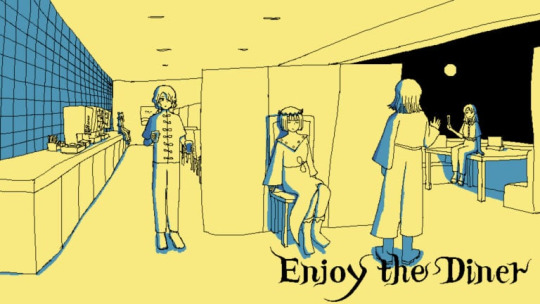
The Switch version of ‘escape the restaurant’ adventure game Enjoy the Diner is now available via Nintendo eShop for $10.99, publisher Waku Waku Games and developers Gekkan Shicchitai and Studio Dragonet announced.
Enjoy the Diner first launched for PC via Steam on July 31.
Here is an overview of the game, via its Steam page:
About
Enjoy the Diner is an adventure game where you’ll wander into the eternal diner Moon Palace. Complete with a drink fountain!
Enjoy the Diner follows a multiple-choice format with point-and-click elements and is a relatively short adventure game. It typically takes two to 2.5 hours to complete (according to Waku Waku Games research). There are two different endings, and you will likely know when the story diverges. Be sure to save your progress before you make your fateful decision.
Key Features
-Ported to a Different Engine – This game has been ported from Godot to Unity, meaning it’s been completely remade. Along with the shift to the new engine, you can now use a game controller in addition to a computer mouse. Enjoy the game in full-screen mode too.
-Conversations Added – New chit-chats with the other Moon Palace customers have been added.
-New Game Completion Perks Added
Complete the game with a certain ending and you’ll be treated to a Sound Gallery and an Illustration Gallery. Why not revisit the drama that unfolded during your time at the Moon Palace?
In the Illustration Gallery, you’ll find character descriptions not found in the main game courtesy of creator Gekkan Shicchitai (Oississui). Plus, you’ll find the sounds used in the game sold separately as a downloadable soundtrack. Be sure to check it out if you liked what you heard.
-Steam Achievement Compatibility– Achievements have been added to Moon Palace. Try out all those drinks at the drink fountain!
1 note
·
View note
Text
Television Academy Interviews
The Television Academy is a treasure trove of interviews from people that worked in televison. Directors, actors, producers, etc have had in depth interviews about not only their roles in televison but also their personal background. Most interviews are between 3-5 hours long but are broken up in chunks by topics covered in the interview part.
Sadly, Deforest was not interviewed before he passed away BUT one can search for a person or topic and see what others had to say about said topic/person. The link is what others had to say about De. Like many have said before, no one has anything bad to say about him.
My favorites about De are Gerald (Jerry) Finnerman's and George Takei's parts, although all the rest are wonderful as well. Jerry was the cinematographer on Star Trek and was good friends with De. George was able to get some history of the studio out of De while they walked to and from the commissary.
Side note: I've seen both Leonard Nimoy's and William Shatner's in depth interviews. Leonard's is really "fascinating", especially about the early days of TV, how shows like Highway Patrol and Dragnet were shot quickly, sponsors of shows, and of course the Spock character, the Star Trek movies, etc. Really worth it in my opinion.
William Shatner's interview was done in two parts and honestly the first part is hard to watch. It was done in September 1999. De died in June and then William's wife Nerine died in August. You can just see him not being himself (and with good reason). And IMO the interviewer wasn't great to begin with. (Nimoy's interviewer was excellent). A second part was filmed a few years later where he's more himself but it's still kind of awkward.
It's really a shame they didn't get a chance to interview De like this.
17 notes
·
View notes
Text
A-T-4 042 Art Of Versions
The Art of Noise follow the Into Battle EP with Beat Box. As you've probably guessed from previous ZTT and AON posts releasing many different edits and versions was their m.o. The image (I got at least) was the technology (most noticeably the Fairlight) and time in the studio gave you the ability to churn out endless variations (AON released at least 11 'diversions' of Beat Box). It was great advertising for Trevor Horn as he and his partner owned one of the most sophisticated recording studios on the planet at the time. It's easy to see similarities with Jamaican producers and studios that in the previous decade created dubs and versions, although the closest AON got to producing a riddim would be Moments In Love which has been covered, remixed, and sampled a lot a lot. We have had pop music factory production lines before and I suppose this is where Trevor Horn crosses over with his contemporary Pete Waterman, according to Phil Harding "Waterman watched Trevor Horn so closely that he would strike a deal with equipment suppliers to furnish him with whatever state-of-the-art gadgetry Horn had." Before his hit factory had been established Waterman produced a Relax sound alike track, complete with a look alike sleeve, in 1984 called The Upstroke by Agents Aren't Aeroplanes. Nowadays trap music can be made quickly for very little money and production is more automated and streamlined than it ever has been
Beat Box was the first track AON worked on and it came from JJ Jeczalik messing around with recordings of Yes drummer, Alan White's drums with a Linn drum machine, a Fairlight CMI Series II and Page R (music sequencing software) while Horn was working on the Yes album 90125 (the similarities between the Red + Blue Mix of Owner Of A Lonely Heart and Beat Box are unmistakable). "So JJ was screwing around in the back room and I remember him playing me that 'Beat Box' drum loop and I said 'Jees, that's fantastic, they'll love that in New York.'"
...And they did, Beat Box did very well on the Billboard dance and black music charts in America, reaching number 1 and 10 respectively. Writer Simon Reynold's has written Beat Box was popular with breakdancers in the US, I believe it's still popular with poppin and lockin dads (and granddads)
In June 1984 AON released their debut album Who's Afraid of the Art of Noise? the title a pun on the 1962 play and later film Who's Afraid of Virginia Woolf? which is itself a pun on the song Who's Afraid of the Big Bad Wolf? from the 1933 Walt Disney cartoon The Three Little Pigs... would we call this a meme?
On the album is Close (To The Edit) which would be released as a single in October 1984. There were five different 12" versions of Close (To The Edit) released, including a picture disk. As far as I can tell AON put out six different versions of the track at the time, including the LP version (that's if I ignore the cassette single). To make matters more confusing Close (To The Edit) evolved out of the afore mentioned Beat Box. Beat Box Diversion Two is a version of Close (To The Edit) and vice versa, as are Diversion Seven and Diversion Eight. Close (To The Edit) was named after the Yes album Close To The Edge and they had fun with the names of the various versions of Close (To The Edit) that they put out, Close-Up, Closer, Closest, Closely Closely (Enough's Enough), Closed
Close (To The Edit) features Anne Dudley playing a very familiar sounding walking bass on piano, if we ignore the car ignition sounds they also use a sample of Boogie Woogie Bugle Boy by The Andrews Sisters. I wondering if this comes from the Duck Rock sessions the then unnamed AON did with Malcom McLaren? I'm thinking Buffalo Gals is taken from a song reference in It's A Wonderful Life, that film was made in 1946 when boogie woogie was the sound. It's either that or they love boogie woogie and swing. AON do love film genre recordings Peter Gunn, Dragnet, James Bond, Robinson Crusoe...
There's another diversion on the Close (To The Edit) singles, a track called A Time To Hear (Who's Listening). Of course there's a few versions, Who's Listening goes into Beat Box and then Close (To The Edit), as does the version called A Time To Clear (It Up) ("all together now") - there's very little difference between these tracks, then there's A Time To Hear (We're Listening) which is the first minute and a half of A Time To Hear (Who's Listening) - the variations of names is more fun the tracks themselves when there's very little to tell them apart... unless the lesson is to accept being resold more of the same stuff in a slightly different package and disappointment
Oh and all these records have come out and Marley Marl still hasn't sampled a drum beat
Art Of Noise - Beat Box Live on the Tube in 1984
youtube
Art Of Noise - A Time To Hear (We're Listening)
youtube
Art Of Noise - Closely Closely, Enough's Enough
youtube
12 versions of Beat Box personally I can see more appearing in time, that's what RSD is for
youtube
2 notes
·
View notes
Photo

TV Guide - April 27 - May 3, 1963
Raymond William Stacy Burr (May 21, 1917 – September 12, 1993) Actor, primarily known for his title roles in the television dramas Perry Mason and Ironside. He was prominently involved in multiple charitable endeavors, such as working on behalf of the United Service Organizations.
Burr emerged as a prolific television character actor in the 1950s. He made his television debut in 1951, appearing in episodes of Stars Over Hollywood, The Bigelow Theatre, Family Theater and the debut episode of Dragnet. He went on to appear in such programs as Gruen Playhouse, Four Star Playhouse, Ford Theatre, Lux Video Theatre, Mr. and Mrs. North, Schlitz Playhouse of Stars and Playhouse 90
Burr moved from CBS to Universal Studios, where he played the title role in the television drama Ironside, which ran on NBC from 1967 to 1975.
After Ironside went off the air, NBC failed in two attempts to launch Burr as the star of a new series. In a two-hour television movie format, Mallory: Circumstantial Evidence aired in February 1976. In 1977, Burr starred in the short-lived TV series Kingston: Confidential. He took on a shorter project next, playing an underworld boss in a six-hour miniseries, 79 Park Avenue.
He won two Emmy Awards, in 1959 and 1961, for the role of Perry Mason, which he played for nine seasons (1957–1966) and reprised in a series of 26 television films (1985–1993). His second TV series, Ironside, earned him six Emmy nominations and two Golden Globe nominations. (Wikipedia)
William Whitney Talman Jr., (February 4, 1915 – August 30, 1968) Television and movie actor, best known for playing Los Angeles District Attorney Hamilton Burger in the television series Perry Mason.
Aside from his major supporting role in Perry Mason, Talman also guest-starred in various television series, including Wagon Train, Have Gun-Will Travel, Cimarron City, and Gunsmoke. After the 1966 cancellation of Perry Mason, Talman appeared on The Wild, Wild West and in a first-season episode of The Invaders, "Quantity: Unknown”, which was his last on-screen acting role before his death. (Wikipedia)
12 notes
·
View notes
Text

WHAT'S ON THE TUBE?
The television landscape is ever-changing. But our viewing habits? Not so much. In this age of apps, and streaming, and bingeing, I find myself enjoying the same types of shows I always enjoyed. So I thought I'd put together a master list of my all-time favorite TV shows divided by genre, and then conclude with an overall Top 10.
POLICE DRAMAS
The Streets of San Francisco
Hawaii 5-0 (2010-2020)
Hawaii 5-0 (1968-1980)
Karen Sisco
Dragnet (1967-1970)
NCIS: Hawaii
Highway Patrol
The Unusuals
In Plain Sight
The Mod Squad
MEDICAL / LAW
ER
House
The Good Wife
The Practice
Ally McBeal
SCI-FI / HORROR
Lost In Space
The Invaders
The Twilight Zone
Bewitched
Angel
Buffy The Vampire Slayer
Space: 1999
Dark Shadows
Star Trek
My Favorite Martian
WESTERNS
Kung Fu (1972-1975)
Have Gun Will Travel
The Rifleman
Tales of Wells Fargo
Cheyenne
The Virginian
Branded
The High Chaparral
The Wild Wild West
Maverick
ESPIONAGE
Person of Interest
Secret Agent
The Man From U.N.C.L.E.
The Avengers
Burn Notice
The Night Manager
Get Smart
Mission: Impossible
I Spy
The Girl From U.N.C.L.E.
WAR
The Rat Patrol
M*A*S*H*
Combat
12 O'Clock High
McHale's Navy
DRAMAS
Room 222
Men of a Certain Age
Relativity
Studio 60 On The Sunset Strip
Once & Again
COMEDIES
Sports Night
The Dick Van Dyke Show
As Time Goes By
WKRP In Cincinnati
Becker
The Mary Tyler Moore Show
The Bob Newhart Show
My Three Sons
The Andy Griffith Show
Everybody Loves Raymond
TALK SHOWS
The Tomorrow Show with Tom Snyder
The Dick Cavett Show
The Tonight Show starring Johnny Carson
Late Night with David Letterman
Speakeasy with Chip Monck
GAME SHOWS
Password
Jeopardy
Master Minds
The Chase
The $10,000 Pyramid (with Dick Clark)
VARIETY/MUSIC
The Smothers Brothers Comedy Hour
Night Music (with David Sanborn)
The Midnight Special
American Bandstand
Don Kirshner's Rock Concert
CARTOONS
Bugs Bunny & Friends
The Bullwinkle & Rocky Show
The Flintstones
The Jetsons
Huckleberry Hound & Friends
*I don't do reality shows.
My All-Time Top 10 Favorite Television Shows
Person of Interest
Sports Night
The Dick Van Dyke Show
The Streets of San Francisco
Hawaii 5-0 (2010-2020)
As Time Goes By
WKRP In Cincinnati
Becker
ER
The Tomorrow Show with Tom Snyder
1 note
·
View note
Photo

Ava Gardner and Burt Lancaster in The Killers (Robert Siodmak, 1946)
Cast: Burt Lancaster, Ava Gardner, Edmond O’Brien, Albert Dekker, Sam Levene, Vince Barnett, Virginia Christine, Jack Lambert, Charles D. Brown, Donald MacBride, Charles McGraw, William Conrad, Phil Brown. Screenplay: Anthony Veiller, based on a story by Ernest Hemingway. Cinematography: Elwood Bredell. Art direction: Martin Obzina, Jack Otterson. Film editing: Arthur Hilton. Music: Miklós Rózsa.
Burt Lancaster and Ava Gardner, at the start of their Hollywood careers, shine out against the noir background of The Killers like the stars they became. Which is perhaps the only major flaw in Robert Siodmak's version of -- or rather extrapolation from -- Ernest Hemingway's classic short story. They're both terrific: Lancaster underplays for once in his film career, which began with this movie, and no one was ever so beautiful or gave off such strong "bad girl" vibes as Gardner. But their presence tends to upend the film, which really stars Edmond O'Brien and a fine cast of character actors. Hemingway's story accounts for only the first 20 minutes or so of the film, the remaining hour of which was concocted by Anthony Veiller, with additional work by John Huston and Richard Brooks. In the Hemingway part of the movie, two hitmen (William Conrad and Charles McGraw) enter a small-town diner looking for their target, a washed-up boxer they call "the Swede." They bully the diner owner and tie up the cook and Nick Adams (Phil Brown), but when they decide that the Swede isn't going to show up for his usual evening meal, they leave. Nick gets loose and runs to warn the Swede, Ole Anderson (Lancaster), in his rooming house, but the man exhibits only a passive acceptance of his fate. The short story ends with the Swede turning his face to the wall and Nick returning to the diner, but in the film we see the hitmen arrive at the rooming house and kill the Swede. What follows is a backstory that Hemingway never bothered with -- although he later told Huston that he liked the movie -- about an insurance investigator's probe into the killing. The Swede had left a small insurance policy, and when the investigator, Reardon (O'Brien), contacts the beneficiary he begins to find threads that lead him back to an earlier payroll heist. With the help of a friend on the police force, Lubinsky (Sam Levene), who knew the Swede from his boxing days, Reardon sorts out the tangled story of what happened to the loot and how the Swede became the target of a hit. Siodmak's steady hand as a director earned him an Oscar nomination, as did Arthur Hilton's editing and Miklós Rózsa's score, which features a four-note motif that was lifted by composer Walter Schumann for the familiar "dum-da-dum-dum" title music of the 1950s TV series Dragnet, leading to a lawsuit that was settled out of court. Veiller was also nominated for the screenplay, but the contributions of Huston and Brooks went uncredited, largely because they were under contract to other studios.
2 notes
·
View notes
Text
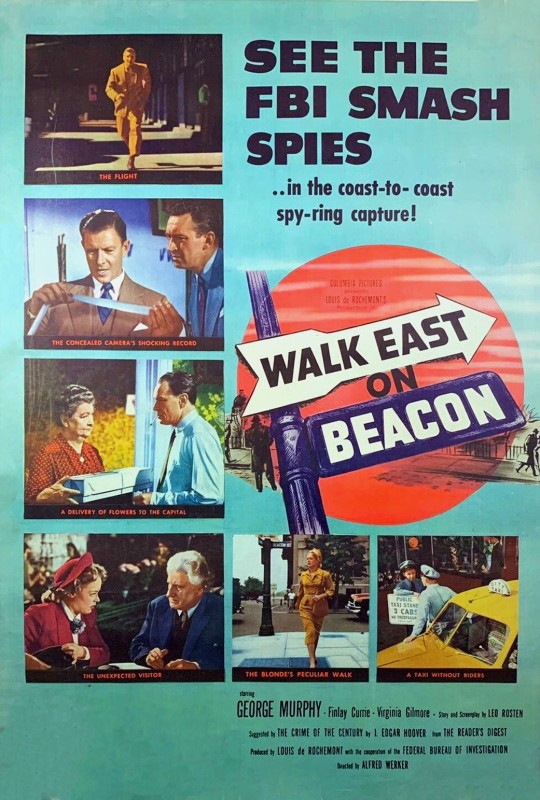
100+ Films of 1952
Film number 125: Walk East on Beacon
Release date: April 29th, 1952
Studio: Columbia
Genre: spy thriller/noir
Director: Alfred L. Werker
Producer: Louis De Rochemont
Actors: George Murphy, Finlay Currie
Plot Summary: FBI agents systematically surveil and break apart a Soviet spy ring in Boston that is trying to compromise secretive U.S. space technology.
My Rating (out of five stars): **
I love spy thrillers, I love noirs, I love Classical Hollywood films that aren’t overly sentimentalized... and yet I could barely stay awake for this film! I literally fell asleep in the middle of it and had to go back and re-watch the last third of the movie. It lacked suspense, it lacked a clear plot, it lacked characters to become invested in... it was just a big boring dud for me.
The Good:
It was competently made in general, I guess? The cinematography, design, music, etc. were all decent quality, but that’s about it.
Some of the surveillance tech of 1952 was fun to see. An early kind of hidden camera was used that was huge by today’s standards.
One of my favorite scenes was when the FBI agents went to a lip-reading school to have the students decipher what two spies were saying to each other! In Romanian, no less!
The Bad:
The acting was pretty bad. Most of the G-men were about as wooden as the desks they sat behind. George Murphy was the “star” of the film, and he’s basically a low rent Ronald Reagan- a passable actor who became a Republican politician later in life. He is not someone who can carry a film. The “baddies” in the cast were better, but no one was especially good in this.
The plot could be hard to follow and the characters hard to keep track of. I appreciate that the film didn’t spoon-feed us the information, but things were often distractingly unclear.
The structure itself was a mess, and it sucked almost all of the suspense out of the movie.
There were no characters to actually care about. Most of the time we barely knew their names. The Einstein-like Professor Albert Kafer was probably the only one humanized in any way.
The film seemed to be trying to rip off the style of Dragnet- a drier, sparser “just the facts, ma'am” vibe. Dragnet, however, always knew to place engaging well-acted characters in the foreground. Without anything like that here, it’s just dry and boring.
There was a chilling line in the film about how the “freedoms guaranteed in the Bill of Rights are available to all loyal American citizens.” No. No. They are available to ALL American citizens- not just the ones who pass whatever your interpretation of “loyal” is!
I felt frustrated so often watching this because I could see the potential for tension, drama, and excitement if the script was better. A moment where a spy in the U.S. was going to get “sent to Moscow” (i.e. killed or imprisoned) could have been terrifying, but instead it barely registered.
0 notes
Text
HEATHER MENZIES
HEATHER MENZIES
Louisa von Trapp The Sound of Music (1965)
1949-2017
Heather Menzies was a Canadian-American actress and model. She is best known for her role as Louisa von Trapp in the film The Sound of Music (1965). She was aged 14, when she was cast in the role and had no previous acting experience. In the film she sang So Long Farewell and Lonely Goathered.
“There was a one time a screen test [for The Sound of Music] fell on a Friday, so I had to miss school and take classes on the set,” Menzies recalls. “There was a trailer out back that acted as our schoolroom for the day. When I got there I saw all of these child actors I’d grown up watching, like Johnny Provost [from the Lassie TV series] and Kurt Russell. I’d grown up worshipping these people and there I was in this schoolroom with them—only now they were peers of mine!”
Menzies was born in Toronto, Canada to Scottish parents who immigrated to Canada after the war. In 1967, she went on to study acting at Falcon Studio’s University of the Arts. After the Sound of Music she went on to appear in numerous programs as well as feature in Playboy magazine in 1973.
She appeared in My Three Sons (1964), Dragnet (1967-1969), Bonanza (1970), James Dean (1976), The Six Million Dollar Man (1977), Logan’s Run (1977-1978), Piranha (1978), and, The Love Boat (1978-1979).
She married Robert Urich in 1969 and remarried him in 1975 and the couple adopted three children. He died in 2002, and she worked tirelessly for the Robert Urich Foundation which raises money for cancer research and to support cancer patients.
Menzies was diagnosed with brain cancer in 2017 and died at the end of that year, aged 68.

#heathermenzies #louisavontrapp #thesoundofmusic #thesoundofmusic1965
0 notes
Text
THIS IS OUR MUSIC: The Fall - "Flat Of Angles"
THIS IS OUR MUSIC: The Fall – “Flat Of Angles”
THIS IS OUR MUSIC: The Fall – “Flat Of Angles”
Song from “Dragnet”, the second studio album by the Fall, released on this day (26 October) in 1979.
youtube
View On WordPress
0 notes
Text
Annamayya telugu movie

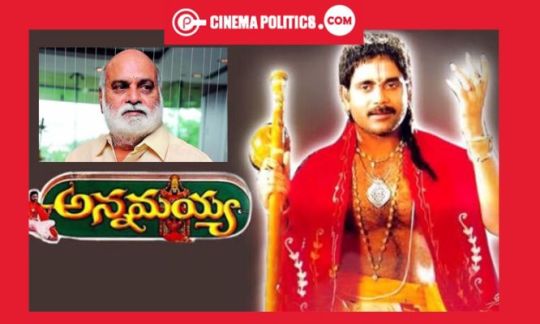
He would personally feed them and would take care of their welfare. He took up a three-story bungalow in Calcutta and housed the children there during the shooting. Pullayya was not just the director but became the de facto father of the children, whom he and his wife Rangamma looked after like their own during the shoot of Anusuya. Pullayya who hailed from Kakinada has the credit of being the first director to make a film with children which was considered a revolution in those days. Even here the lead actors were children, with the other roles essayed by adults, but the seeds of a full-blown children’s film were laid with ‘Sati Anusuya’ĭirected by C Pullayya again, he was considered a genius with his experience in the fields of film presentation, production, and directing since the silent era. The lead child artists (Master Bhimarao, Master Malleshwara Rao) who acted as Lava and Kusa - both became stars overnight thus paving way for the children’s film in India. Ramayana-based story 'Lava-Kusha' is the first box office hit in Telugu. The Calcutta-based East India Film Company had already made two Telugu talkies, 'Sati Savitri' (February 5, 1933) and 'Lava Kusha' (December 22, 1934), where both were directed by Chittajallu Pullayya (Pullaih were super hits and made huge profits. Producers in Bombay and Calcutta studios were mostly making films in Telugu. It completed 50 days in 92 centres and 100 days in 60 centres.Children’s Day 2021 Special: The first Children’s film in India was made in the year 1936 and the notable fact was that it was two Telugu films titled 'Sati Anusuya' and 'Dhruva Vijayam' which heralded the era of Children's films in the country.ĭuring the initial days after the silent era of movies ended in our country and the talkies had hit the silver screen, the first full Telugu talkie 'Bhakta Prahlada' (Februand where the lead was a child) was released. The film had collected a distributors' share of Rs.16 crore in the initial two weeks after its release. The track "Hima Seemallo", sung by Hariharan and Harini won the Nandi Award for Best Playback Singer, Male for Hariharan. Mani Sharma composed the songs, while Veturi, Bhuvanachandra, Jonnavittula and Vennelakanti penned the lyrics.
Mamilla Shailaja Priya as Priya, Soundarya's friend.
Soundarya as Gajjala Kanaka Maha Lakshmi Devi.
Chiranjeevi as Rajaram (Aathmaram in hallucination).
The film ends with all the three brothers getting married Rajaram with Devi, Ravi with Latha, and Gopi with Geetha. In the ensuing melee, Rangarao is killed. Rangarao is the brother of Chinna Rao, a criminal who was caught in the police dragnet with Rajaram's help and later died. A furious Rajaram goes to Rangarao, who reveals his real identity.

The brothers escape death and land in a hospital with injuries. Rangarao has other plans and tries to have them killed with gundas. This brings about a total change in them and the repentant duo go to Rangarao to restore the property to their brother. She, being in the know, slaps them and opens their eyes by informing them of his sacrifice. Piqued at being kicked out of home, his brothers, unaware of his hand in securing the partnership for them, nurse a grudge against their brother and insult Rajaram in Devi's presence. Rajaram, who is genuinely fond of his brothers, sells away his property and gives money secretly to Rangarao, paving the way for a partnership deal between Rangarao and his brothers. The two brothers being state rank holders in engineering find favor with a businessman, Rangarao, who employs them. An outraged Rajaram kicks his brothers out of home. She insults him and leaves with her sisters. But the incorrigible brothers come in an inebriated condition for their engagement and Rajaram faces the brunt of Devi's ire. Since then on he is more exacting with his brothers and brings about a transformation in them. Rajaram reacts sharply to it and vows to get his brothers married to her sisters. But she curtly refuses her consent on grounds that the two are wayward drunkards. On his brothers' request, Rajaram approaches Devi for her sisters' hands in marriage to his brothers. With more such incidents, the two fall in love, with the brothers and sisters not far behind. Rajaram takes the incident lightly as the pranks of youngsters and is very lenient with them. After that acquaintance, she once seeks his help in dealing with two street ruffians, who were teasing her sisters, Lata and Geetha, and is shocked when the culprits turn out to be his brothers, Ravi and Gopi. Rajaram, owner of a fleet of lorrie, meets Devi, a garment factory owner.

0 notes
Link

When you think of grunge, do you picture a bunch of long-haired White guys in plaid shirts, singing about teenage angst and self-loathing? Time to expand that viewpoint. Standing above them all should be Tina Bell, a tiny Black woman with an outsized stage presence, and her band, Bam Bam. It’s only recently that the 1980s phenom has begun to be recognized as a godmother of grunge.
This modern genre’s sound was, in many ways, molded by a Black woman. The reason she is mostly unknown has everything to do with racism and misogyny. Looking back at the beginnings of grunge, with the preconception that “everybody involved” was White and/or male, means ignoring the Black woman who was standing at the front of the line.

Bam Bam was formed as a punk band in 1983 in Seattle. Bell, a petite brown-skinned spitfire with more hairstyle changes than David Bowie, sang lead vocals and wrote most of the lyrics. Her then-husband Tommy Martin was on guitars (the band’s name is an acronym of their last names: Bell And Martin), Scotty “Buttocks” Ledgerwood played bass, and Matt Cameron was on drums. Cameron would leave the band in its first year and go on to fame as the drummer for Soundgarden and Pearl Jam. But he paid homage to his beginnings by wearing a Tina Bell T-shirt in a photoshoot for Pearl Jam’s 2017 Anthology: the Complete Scores book.
“For some reason a couple of skinheads are up front, calling her [the N-word] And all of the sudden, Bell grabs a microphone stand and she starts swirling it around her head like a lasso… She swung that fuckin’ thing around her head and about the fourth time, she smashed that son of a bitch.”
Bam Bam’s sound straddled the line between punk and something so new that it didn’t have a name yet. Their music combined a driving, thrumming bass line; downtuned, sludgy guitars; thrashy, pulsing drums; melodic vocals that range from sultry to haunting to screamy; and lyrics about the existential tension of trying to exist in a world not designed for you. The band’s 1984 music video for their single “Ground Zero” is low-budget, but Bell’s charisma seeps through.
“She was fucking badass. That’s all there is to it. She was amazing as a performer. I’ve only seen one White male lead singer command the stage in a similar way that Tina Bell did, and that was Bon Scott of AC/DC,” says Om Johari, who attended Bam Bam shows as a Black teenager in the ’80s and who would go on to lead all-female AC/DC cover band Hell’s Belles.
youtube
Christina King, a Seattle scenester who was close friends with Bell from 1984 until the early ’90s, says the singer’s talent was obvious. But she believes a lot of people dismissed Bell as a gimmick.
Among those attending their shows: Future members of grunge bands like Nirvana (Kurt Cobain did a stint as a Bam Bam roadie), Soundgarden, Alice in Chains, and Pearl Jam.
“I remember one person saying to me that they didn’t get ‘the whole Black girl singer thing,’ it just didn’t fit whatever they were into,” says King. “They were too ahead of their time.”
Bam Bam came into being in an era when hundreds of underground clubs, taverns, bars, and social halls — anywhere that you could cram in a band — were within the Seattle city limits. Bam Bam played almost all of them, and often to big crowds: The Colourbox, Crocodile Lounge, Gorilla Gardens, Squid Row — just to name a few.
Among those attending their shows: Future members of history-making grunge bands like Nirvana (Kurt Cobain did a stint as a Bam Bam roadie), Soundgarden, Alice in Chains, and Pearl Jam. Not to mention all the other people, mostly White and male, who would become prime targets for music labels trying to market this new sound.
Bell “already possessed everything they were trying to attain. She had a truer rock and roll spirit than almost any of those guys in that town. Everything they tried to do, she naturally was,” says Ledgerwood, still a loyal bandmate.
One Seattle club, The Metropolis, became “like our fucking living room,” says Ledgerwood. It was also the site of an overtly racist verbal assault against Tina Bell.
“For some reason a couple of skinheads are up front, calling her [the N-word],” Ledgerwood recalls. “And all of the sudden, Bell grabs a microphone stand and she starts swirling it around her head like a lasso… She swung that fuckin’ thing around her head and about the fourth time, she smashed that son of a bitch… She nailed that fucker right in the temple of his head. Split like a melon. And the other guy next to him caught it too, they go down, and we’re like, ‘What the fuck?’”
Ledgerwood says that after going backstage for a while to regroup, Bell came back “and put out the most blistering set of our fucking career.”
This could easily be an anecdote about Bell’s power, her resilience, and willingness to fight back against oppressive forces. But it’s also a story about the cost of being a Black woman who does something that some people don’t expect or approve of.
“She’s being pulled out of her zone because somebody is acknowledging how the rest of the world can see her,” says Johari, empathizing with the star rocker. “And even to react to it by picking up a microphone and smashing someone in the face, that means that that incident cost her not only that moment it takes to get back into the song, but the whole [effects of her] action will last for weeks.
“She’ll replay that over and over and over and over again. And then the people she sees that were there when it happened, they’re gonna come up to her and they’re gonna forget everything that she’s saying, all the stuff that she had did, and they’re only going to focus on, ‘I was at that show where you knocked a dude in the head for calling you an N-word,’” Johari says. “It has nothing to do with her artistry. But it reminds her of the way in which she has to be prepared, just in case it happens again.”
King remembers Bell also felt that some of the other men in the band’s changing lineup failed to treat her as an equal partner: “She’s getting that from her own band members — what do you think audience people are like?”
A European tour in the late ’80s gained Bam Bam international fans, but ended after Bell and Martin split up, and Bell was caught in an immigration enforcement dragnet in the Netherlands.
When they returned to the Pacific Northwest, Bam Bam continued playing shows until 1990, when Bell abruptly quit as they were packing up to head to the studio in Portland, Ore.
“She had just had enough,” Ledgerwood says. “For almost eight years she had almost literally eviscerated herself for the audience.”
But that work never resulted in the national recognition they deserved.
“Grunge, whatever that means, is being identified as from your community, your colleagues, your sound that you were a participant in help shaping, and you’re not even mentioned in any of it.”
“Sometimes you need to be a little bit of an asshole to protect yourself. And Bell wasn’t much of an asshole,” Ledgerwood adds. “She was a pure-hearted person and had a really hard time believing that people couldn’t accept her over something as stupid as race.”
Bell didn’t just quit the band, she withdrew from music completely, says her son, Oscar-winning documentary filmmaker TJ Martin. Not out of resentment, he adds, but perhaps to escape the painful reminders that the music she helped pioneer was now earning other bands multimillion-dollar record contracts.
“Grunge, whatever that means, is being identified as from your community, your colleagues, your sound that you were a participant in help shaping, and you’re not even mentioned in any of it,” Martin says. “I can’t even fathom what that would feel like for it to be sort of spit back in your face with such frequency.”
Ledgerwood believes Bell died of a broken heart. But when Bell died alone in her Las Vegas apartment in 2012, the official cause of death listed was cirrhosis of the liver. She had struggled with alcohol and depression. Her son says the coroner estimated her time of death as a couple weeks before her body was discovered. She was 55 years old.
The things that could have told Tina Bell’s story in her own voice are lost. Martin arrived in Las Vegas to find that the contents of his mother’s apartment — except for a DVD player, a poster, and a chair — had been thrown away. All of her writings — lyrics, poems, diaries — along with Bam Bam music, videos, and other memorabilia — went in the trash without her family even being notified.
If you think you were in Seattle in the ’80s, in the grunge scene, and you don’t remember Tina Bell and Bam Bam, you probably weren’t really fucking there.
“I couldn’t help draw a parallel between her not being respected and seen in the first chapter of her life, as the front person of a punk band, and then even in death being disrespected and not being seen for the merits of the life she lived,” says Martin.
Bell’s death is also an indictment of the way she was written out of her own story. The way grunge’s almighty gatekeepers chose to look through her instead of at her. Grunge became the domain of alienated young White men in flannel shirts, and Tina Bell didn’t fit the narrative they were trying to sell.
“Black herstory can suffer immense amounts of erasure if somebody is not brave enough to ensure that women get counted,” Johari says.
To many of those who were part of the scene at the time, the amnesia seems intentional. Ledgerwood brings up the seminal history of Seattle’s grunge era, Everybody Loves Our Town. In it, the author refers to Bam Bam as a three-piece instrumental band mainly notable because Matt Cameron was the drummer. Tina Bell isn’t even mentioned.
“How in the hell would he have a recollection of how great Bam Bam and its drummer was, and not this unbelievably beautiful woman, this firecracker, this explosive rock and roll goddess?” Ledgerwood asks. “Even if he thought she sucked, to not remember the only Black woman on the whole fuckin’ scene is — well, it’s like that old joke about the ’60s: If you think you were in Seattle in the ’80s, in the grunge scene, and you don’t remember Tina Bell and Bam Bam, you probably weren’t really fucking there.”
You can listen to more of Bam Bam’s music on this Spotify playlist. A vinyl album with the band’s songs is coming out this year on Bric-a-Brac Records.
#Alice in Chains#Bam Bam#black history#black women#black women in rock#grunge#Kurt Cobain#music#Nirvana#Pearl Jam#rock#Seattle#Soundgarden#Tina Bell#women in rock#women's history#80s
300 notes
·
View notes
Text
Random E! Thoughts: S4E1 - The Screenwriter
Oh this one will be a pain to analyze - this episode has its moments, but most of them are the exact kind of second-hand embarrassment that really do me in, lol. If I missed something because I skipped through a scene with closed eyes and my fingers in my ears, please do help me out.
I assume Art’s obsession with Big Red kind of mirrors the lack of publicity paramedics had outside the show or whatever.
Also, him leaning on the fourth wall with the camera on the squad, lol. I gotta admit, I do love the way the squad scenes are filmed, and this is a cool way to call out some really nifty camera placement.
I also really love how “The firetruck (nope #1) hurtles towards destiny (nope #2) at 80 miles an hour (nope #3)” is instantly followed up by Johnny glancing over at the speedometer showing 40 mph
Also, ever notice how basically every character in this show involved in the entertainment industry is a total weirdo? The question is if that’s humorously exaggerated self-awareness or getting in a good jab at one’s coworkers.
Also, Brackett being a badass again and refusing to clear a patient until he is perfectly sure that there’s nothing wrong with him.
I also think it’s interesting how mixed the portrayal of cops is on this show - same studio as massive PR boosts for the police like Dragnet or Adam-12, but they’re not nearly always the good guys in this one, at least not without some serious reservations, and even when they’re not being too blunt and too judgmental, they’re still people with guns and there’s a certain danger to that (like with Vince in that one late-series episode). E! never quite touches on anything controversial there, but it’s also not the clear-cut “infallible dutiful protectors” portrayal I would’ve expected from this show specifically.
Chet’s taste for shitty movies is brought up in this one - it’s a bit of a running theme.
Typewriter Identification Time: SCM/Smith-Corona. Got some help with that one earlier today (I can identify many (most?) common fountain pens on sight, but not typewriters, alas, especially since I swear the camera angles are as unhelpful as possible on purpose), and apparently the logo dates it to post-1962; might be a Secretarial or a related model. Haven’t found a perfect match yet, though.
Chet’s “My greatest experience? You wouldn’t be able to film it, pal - I’ll tell you about it, though :)” - I’m still laughing about that one.
Johnny getting tossed at a wall makes for pretty entertaining TV.
I think part of what makes this scene so interesting is A) the relative power imbalance (sure, they outnumber the guy, but they’re also unarmed and have no way to safely keep him in check) and B) The fact that Johnny clearly knows that this is a bad idea from the start, and moment of “I really do not want to do this” being so clearly visible in his expression when he gets back up, because Johnny isn’t fearless or infallible, just determined to do his job and do it well. There’s something equally vulnerable and badass about that.
Also, Roy standing off to the side, syringe in hand, his facial expression basically exemplifying “... oh bother.”
I’ll give E! a pass on the “depicting women as vapid and useless” thing this time because Art’s basically the same, but I do have to applaud the lady who played Renee - Carol Wayne - for annoying the everliving hell out of me. Excellent job on the acting (if a bit extremely on the nose), but please, no more.
Johnny and Roy on their way to a maternity case. Johnny gets out of the squad, instantly takes his helmet off now that they’re at the scene, puts it on top of the squad, and it promptly clatters onto the floor a half-second later.
Relatively casually Deaf characters are neat. Sure, it adds a level of complication, but their lack of hearing isn’t really integral to the rescue. Also, love that they very deliberately seemed to include some ASL, though I don’t know enough about it to recognize if they did a good job or not.
The way Chet’s barely finished saying “Cap, we’ve got another man in there” in that last rescue and Cap just goes “John, go” while barely even looking up.
Also, almost always in that “this temporary tag-along is a pain in the ass” episodes, the tag-along eventually learns their lesson and stops being a pain in the ass... and then there’s Art who looks like he’s had a revelation for literally five seconds before that thought sinks back into the murky depths of his imagination.
16 notes
·
View notes
Text
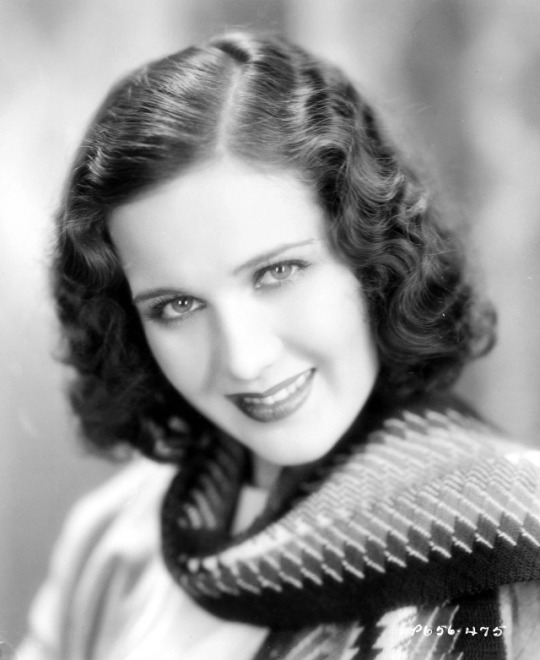
Mary Brian (born Louise Byrdie Dantzler, February 17, 1906 – December 30, 2002) was an American actress, who made the transition from silent films to sound films.
Brian was born in Corsicana, Texas,[3] the daughter of Taurrence J. Dantzler and Louise B.. Her brother was Taurrence J. Dantzler, Jr.
Her father died when she was one month old and the family later moved to Dallas, Texas.[3] In the early 1920s, they moved to Long Beach, California. She had intended becoming an illustrator but that was laid aside when at age 16 she was discovered in a local bathing beauty contest. One of the judges was famous motion picture star Esther Ralston (who was to play her mother in the upcoming Peter Pan and who became a lifelong friend).
She didn't win the $25 prize in the contest, but Ralston said "you've got to give the little girl something." So, her prize was to be interviewed by director Herbert Brenon for a role in Peter Pan. Brenon was recovering from eye surgery, and she spoke with him in a dimly lit room. "He asked me a few questions, Is that your hair? Out of the blue, he said I would like to make a test. Even to this day, I will never know why I was that lucky. They had made tests of every ingénue in the business for Wendy. He had decided he would go with an unknown. It would seem more like a fairy tale. It wouldn't seem right if the roles were to be taken by someone they (the audience) knew or was divorced. I got the part. They put me under contract." The studio renamed her Mary Brian.
After her showing in the beauty contest, she was given an audition by Paramount Pictures and cast by director Herbert Brenon as Wendy Darling in his silent movie version of J.M. Barrie's Peter Pan (1924). There she starred with Betty Bronson and Esther Ralston, and the three of them stayed close for the rest of their lives. Ralston described both Bronson and Brian as 'very charming people'.
The movie studio, who created her stage name for the movie and said she was age 16 instead of 18 because the latter sounded too old for the role, then signed her to a long-term contract. Brian played Fancy Vanhern, daughter of Percy Marmont, in Brenon's The Street of Forgotten Men (1925), which had newcomer Louise Brooks in an uncredited role as a moll.
Brian was dubbed "The Sweetest Girl in Pictures." On loan-out to MGM, she played a college belle, Mary Abbott, opposite William Haines and Jack Pickford in Brown of Harvard (1926). She was named one of the WAMPAS Baby Stars in 1926, along with Mary Astor, Dolores Costello, Joan Crawford, Dolores del Río, Janet Gaynor, and Fay Wray.
During her years at Paramount, Brian appeared in more than 40 movies as the lead, the ingenue or co-star. She worked with Brenon again in 1926 when she played Isabel in P.C. Wren's Beau Geste starring Ronald Colman. The same year, she made Behind the Front and Harold Teen. In 1928, she played ingenue Alice Deane in Forgotten Faces opposite Clive Brook, her sacrificing father, with Olga Baclanova as her vixen mother and William Powell as Froggy. Forgotten Faces is preserved in the Library of Congress.
Her first sound film was Varsity (1928), which was filmed with part-sound and talking sequences, opposite Buddy Rogers. After successfully making the transition to sound, she co-starred with Gary Cooper, Walter Huston and Richard Arlen in The Virginian (1929), her first all-sound movie. In it, she played a spirited frontier heroine, schoolmarm Molly Stark Wood, who was the love interest of the Virginian (Cooper).
Brian co-starred in several hits during the 1930s, including her role as Gwen Cavendish in George Cukor’s comedy The Royal Family of Broadway (1930) with Ina Claire and Fredric March, as herself in Paramount's all-star revue Paramount on Parade (1930), as Peggy Grant in Lewis Milestone’s comedy The Front Page (1931) with Adolphe Menjou and Pat O'Brien.
After her contract with Paramount ended in 1932, Brian decided to freelance, which was unusual in a period when multi-year contracts with one studio were common. The same year, she appeared on the vaudeville stage at New York City's Palace Theatre. Also in the same year, she starred in Manhattan Tower.
Other movie roles include Murial Ross, aka Murial Rossi, in Shadows of Sing Sing (1933), in which she received top billing; Gloria Van Dayham in College Rhythm (1934); Yvette Lamartine in Charlie Chan in Paris (1935); Hope Wolfinger, W.C. Fields’s daughter, in Man on the Flying Trapeze (1935); Sally Barnaby in Spendthrift (1936); and Doris in Navy Blues (1937), in which she received top billing.
In 1936, she went to England and made three movies, including The Amazing Quest of Ernest Bliss, in which she starred opposite Cary Grant, whom she became engaged at one stage.
Her final film of the 1930s was Affairs of Cappy Ricks, but she auditioned unsuccessfully for the part that went to Janet Gaynor in A Star is Born.
When World War II occurred in 1941, Brian began traveling to entertain the troops, spending most of the war years traveling the world with the U.S.O., and entertaining servicemen from the South Pacific to Europe, including Italy and North Africa. Commenting on those events that had occurred over 50 years ago, she said in 1996,
I was with Charlie Ruggles in Okinawa. And I was on the island of Tinian when they dropped the atomic bomb. Colonel Paul Tibbets, who was the pilot and the officer in charge [of dropping the bomb] took Charlie and me on the plane the next day, and nobody had been allowed in that encampment. So I was on the Enola Gay.
Flying to England on a troop shoot, Mary got caught in the Battle of the Bulge and spent the Christmas of 1944 with the soldiers fighting that battle.
She appeared in only a handful of films thereafter. Her last performance inmovies was in Dragnet (1947). Over the course of 22 years, Brian had appeared in more than 79 movies.
She played in the stage comedy Mary Had a Little... in the 1951 in Melbourne, Australia, co-starring with John Hubbard.
Like many "older" actresses, during the 1950s Brian created a career in television. Perhaps her most notable role was playing the title character's mother in Meet Corliss Archer in 1954. .
She also dedicated much time to portrait painting after her acting years.
Although she was engaged numerous times and was linked romantically to numerous Hollywood men, including Cary Grant and silent film actor Jack Pickford, Brian had only two husbands: magazine illustrator Jon Whitcomb (for six weeks, beginning May 4, 1941) and film editor George Tomasini (from 1947 until his death in 1964). After retiring from movies for good, she devoted herself to her husband's career; Tomasini worked as film editor for Hitchcock on Rear Window (1954) and Psycho (1960).
She died of natural causes on December 30, 2002 at a retirement home in Del Mar, California at the age of 96. She is interred in the Eternal Love Section, Lot 4134, Space 2, Forest Lawn – Hollywood Hills Cemetery, overlooking Burbank, California.
In 1960, Brian was inducted into the Hollywood Walk of Fame with a motion pictures star at 1559 Vine Street.
#mary brian#silent era#silent hollywood#silent movie stars#golden age of hollywood#classic movie stars#classic hollywood#1920s hollywood#1930s hollywood#1940s hollywood
12 notes
·
View notes
Text
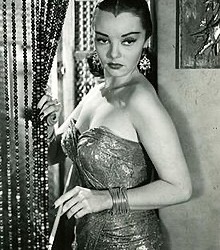
Gloria Ella Saunders (September 29, 1927 – June 4, 1980) was an American actress of film and television, primarily from the late 1940s to 1960.
Saunders was born to George D. and Lucille P. Saunders in Columbia, South Carolina. As a child she worked in radio and in the Little Theater in Charlotte, North Carolina. At the age of 16 in June 1944, she screen tested for Paramount Studios. In 1945, she was seriously injured in an automobile accident and suffered a facial cut from her forehead to the tip of her chin. By October 1951, numerous plastic surgeries resolved the scarring.
Saunders acting career began on stage. She was discovered when she performed in a production of Rebecca in the southern United States, after which she acted in a San Francisco production of Adam Ate His Apple".
Her first important role was as Sparky, an operator in the Women's Army Corps of World War II in the 1946 film O.S.S., with Alan Ladd. In 1951, she played Terry Flynn in the film Crazy Over Horses. That same year, she was cast as Anne DuMere in the film, Northwest Territory, starring Kirby Grant.[3][better source needed] In 1952, Saunders was cast as Catherine in the science fiction film Captive Women.
Saunders had recurring roles in two of the earliest television series. In 1949 and 1950, she was cast in the role of Ah Toy in Mysteries of Chinatown.[5] She appeared in an undetermined number of episodes, possibly as many as forty-eight. In 1953, she played the character, The Dragon Lady, in 1333 episodes of the series Terry and the Pirates, with John Baer in the title role.
She was cast as Sally Jones in the 1951 episode "Boulder City Election" of the television series The Adventures of Wild Bill Hickok, with Guy Madison in the title role. From 1952 to 1953, she appeared in five episodes of another syndicated western series The Range Rider. She appeared twice in 1952 on the syndicated western The Cisco Kid.
From 1951 to 1953, she appeared three times in the early police drama, Racket Squad. In 1953, she was twice cast on Jack Webb's Dragnet. In another 1953 role, she played Lily in "The Riddle of the Chinese Jade" on the syndicated series Adventures of Superman.
Saunders appeared in the Columbia Pictures film Red Snow (1952),and she portrayed Zelda in the Columbia production Prisoners of the Casbah (1953).
In 1956, Saunders was cast as Christina in "The Voyage of Captain Castle" of Frontier. The same year, she was cast as Gloria DiNeen in "What Price Gloria" of the syndicated State Trooper, starring Rod Cameron. In 1955 and 1957, she appeared in two episodes, "The Silk Stocking Case" and "The Ambitious Peddler Case", respectively, of The Lineup, starring Warner Anderson and Tom Tully. In 1957, she played Grace Patton in the episode "Angel of Loudoun" of the American Civil War series The Gray Ghost, starring Tod Andrews as the Confederate Major John Singleton Mosby. The same year, she played Virginia Malcolm in "The Torch Carriers" of David Janssen's Richard Diamond, Private Detective series, first broadcast on CBS.
In the episode "The Wicked Widow" (May 21, 1957) of the ABC/Desilu television series The Life and Legend of Wyatt Earp, Saunders was cast as Myra Malone, an attractive widowed dressmaker.
In 1957 and 1958, she was cast in two other western series, as Rose in "The Town" of the CBS series Trackdown, starring Robert Culp and in the segment "Iron Trail Ambush" of the syndicated Frontier Doctor, starring Rex Allen. Her last acting role was in 1960 as a mystery woman on The Donna Reed Show.
Saunders first married the television director Arthur Rue "Tommy" Thompson (1927-2000). Saunders said that she likely would not have gone into television acting had it not been for her accident, and she would not have met Thompson had she not gone into television. The couple divorced in 1956, with a two-year-old child. She subsequently married a man named Maier.
#gloria saunders#classic hollywood#classic movie stars#golden age of hollywood#old hollywood#classic television#1940s hollywood#1950s hollywood#1960s hollywood
8 notes
·
View notes
Photo

Character Actress
Barbara Eiler (July 27, 1922 - July 16, 2006) Radio and television actress known for The Magical World of Disney (1954), The Rifleman (1958) and One Step Beyond (1959).
Other Television Credits:
Racket Squad
It’s a Great Life
The Pepsi-Cola Playhouse
Studio 57
The Lone Ranger
Dragnet
Star Stage
The People’s Choice
The Loretta Young Show
Chevron Hall of Stars
Cheyenne
Screen Directors Playhouse
Stage 7
The Adventures of Jim Bowie
Zane Grey Theater
Conflict
Crossroads
Cavalcade of America
Tales of Wells Fargo
The Millionaire
Richard Diamond, Private Detective
Alcoa Theatre
Goodyear Theatre
Wanted: Dead or Alive
Trackdown
The Donna Reed Show
Markham
Thriller
Shirley Temple’s Storybook
The Case of the Dangerous Robin
The Dick Van Dyke Show
The Hathaways
Wagon Train
Alcoa Premiere
My Three Sons
The Bill Dana Show
The Adventures of Ozzie and Harriet
The Virginian
Gomer Pyle: U.S.M.C.
Headmaster
2 notes
·
View notes
Text
BARNEY PHILLIPS
October 20, 1913

Barney Phillips was born Bernard Philip Ofner in St. Louis, Missouri. He went on to become a recognizable character actor on radio, television, and films, mostly playing hard-edged law enforcement officials. After graduating college in 1935, he moved to Los Angeles.
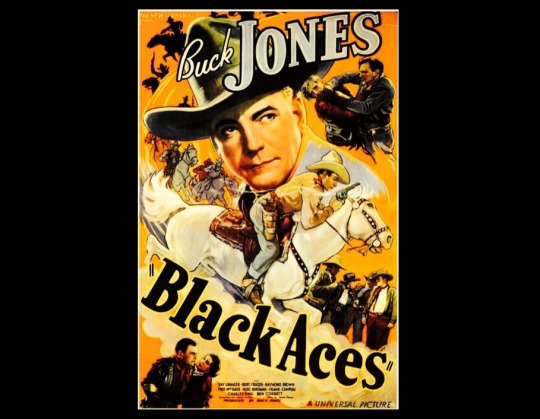
Interested in acting, he got a small part in western called Black Aces in 1937, but it did not immediately lead to other roles.

In 1940, he was in Meet the People on Broadway. He shared the stage with Jack Albertson, Jack Gilford, and Nanette Fabray (stage debut), all of whom would also work with Lucille Ball. This musical has nothing to do with the identically titled 1944 film featuring Lucille Ball.
Phillips enlisted in the United States Army in July 1941, serving in the signal corps during World War II.

He made his TV debut on “Dragnet” in 1951 as Sergeant Ed Jacobs. He had also done the show on radio. After Barney disappeared from the show after the first season, it was widely believed that he had died. Apparently viewers confused him with Barton Yarborough, who had died early in the first season. He took out an ad in the newspaper assuring people that he was alive and well and available to work.
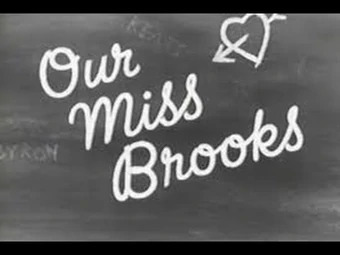
In 1952 and 1953 he did two episodes of “Our Miss Brooks” filmed at Desilu Studios. Due to his work on the popular “Dragnet”, both times he played law enforcement officials.

His one and only time acting with Lucille Ball was on “I Love Lucy” in “Ricky’s European Booking” (ILL S5;E10), playing Mr. Jamison, the man from the District Attorney’s Office investigating Lucy and Ethel’s raffle for Ladies Overseas Aid.

In March 1958, he did a single episode of Desilu’s helicopter series “Whirlybirds”. The episode marked Pernell Roberts’ TV debut.
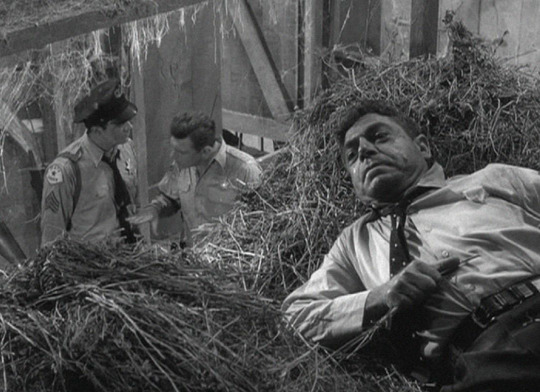
In May 1961, Phillips returned to the Desilu backlot to film an episode of “The Andy Griffith Show” where he was on the other side of the law in “Barney Gets His Man.”

In January 1963, he returned to law enforcement and Desilu to film an episode of “The Dick Van Dyke Show” titled “The Cat Burglar.”
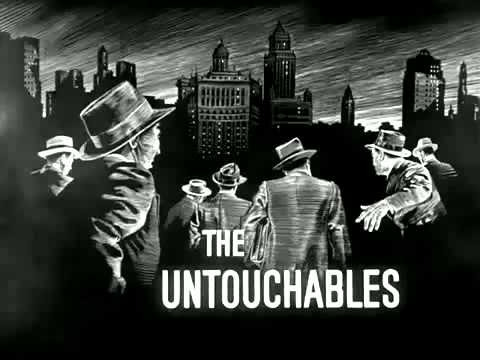
In March 1963 Phillips did a single episode of “The Untouchables” one of Desilu’s most successful yet controversial series.
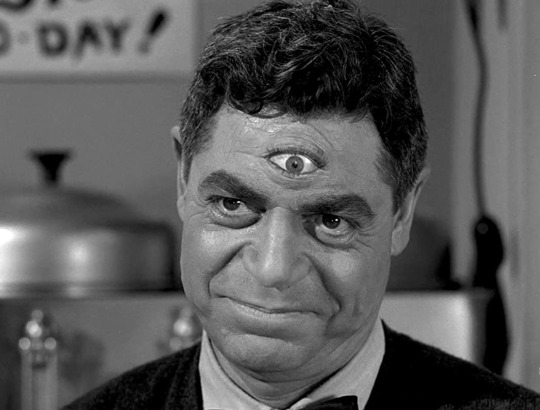
Of all his credits, he is best remembered as the Venusian invader masquerading as soda jerk Haley, behind the diner counter of “The Twilight Zone’s” “Will The Real Martian Please Stand Up?” in 1961. The final moment, in which he removes his cap revealing a third eye, remains one of the most memorable moments in TV history. He continued doing episodic television for the next twenty five years, with his last roles on “Lou Grant” and “The Dukes of Hazard” in 1982.
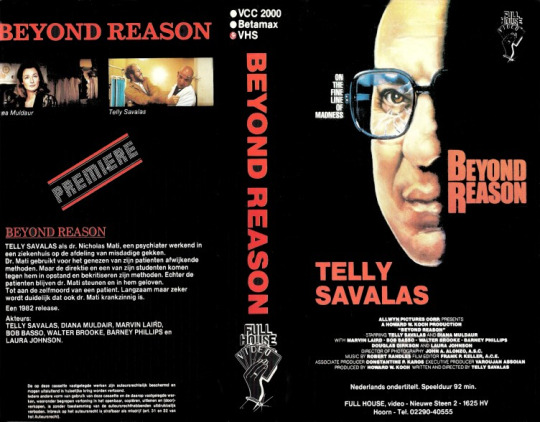
His final screen role came posthumously in Beyond Reason, a film written, directed and starring Telly Savalas which was filmed in 1979 and not released until 1985. In a welcome change, he played a doctor.
In 1941 he married actress Marie DeForrest. He died on August 17, 1982 at age 68.
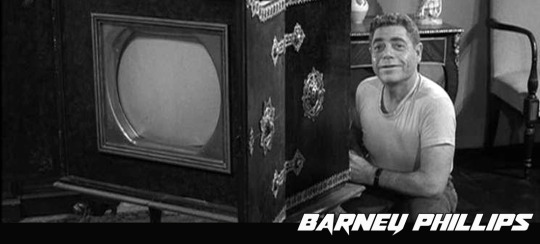
#I love lucy#barney phillips#Lucille Ball#The Twilight Zone#The Untouchables#TV#Beyond Reason#The Dick Van Dyke Show#Our Miss Brooks#WhirleyBirds#The Andy Griffith Show#Dragnet#Meet the People#Black Aces
11 notes
·
View notes